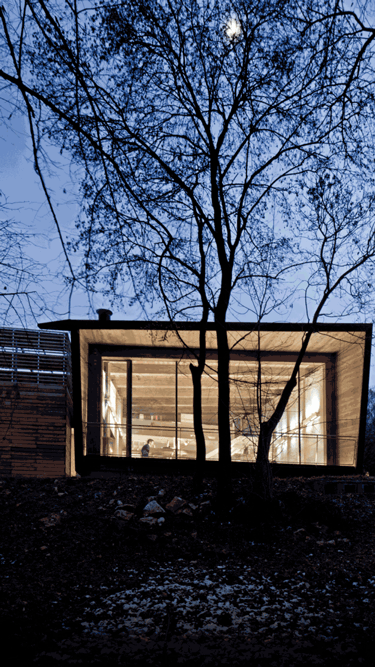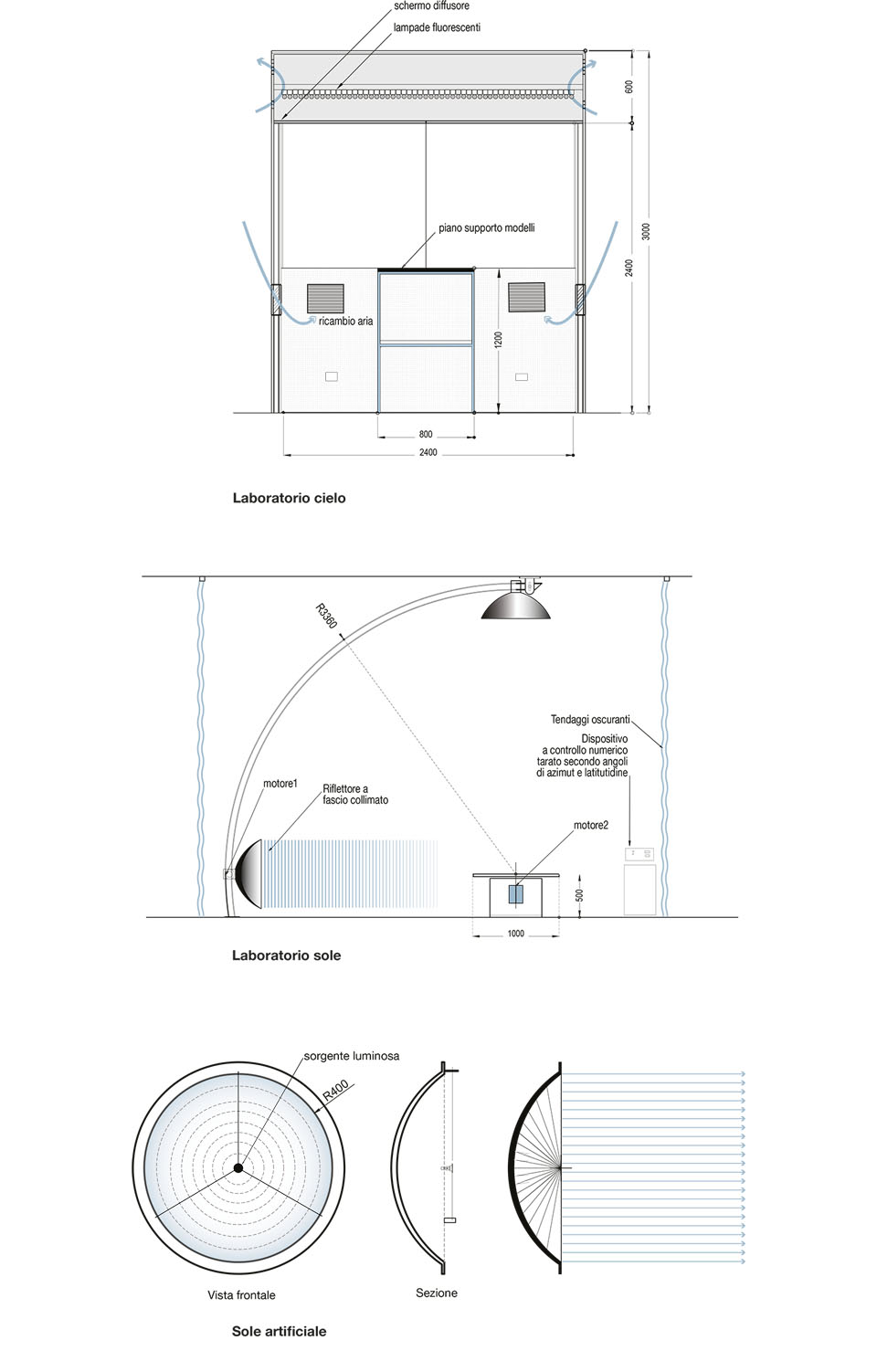iuav daylight laboratories
1999
venezia
Artificial sky
The artificial sky is in a room with approximate dimensions of 3x3x2.5m, where the walls are entirely reflective and the ceiling is a homogeneous surface with diffusing back light. The result is a seemingly infinite space that simulates the conditions of an overcast sky with uniform luminance.
At the center of the space there is a support surface for the model of study and for the measurement equipment.
In this workshop you can take data such as photos, and photometric data with luminance.
The lighting data is produced in a dimensionless mode, using the daylight factor.
The daylight factor
This factor is defined as the ratio between the luminance level within the model and the luminance measured on a surface placed outside in a horizontal position. Using this factor, information can then be obtain regarding the luminance correlated to the site, on any day of the year at any time using simple mathematical models.
The data obtained in this laboratory, once processed through the application of different mathematical models may be representative not only of an overcast sky overcast type, but also a clear sky.
The artificial sun
The artificial sun consists of a large parabolic reflector, designed to emit rays parallel to each other and capable of assuming different height. This reflector illuminates a swivel, where you place the scale model of the object of study, and are able to rotate it automatically to assume the various positions of the solar azimuth.
This equipment is located in a completely black room, so as to almost totally eliminate any diffused light.
Also in this lab, photographic luminance data can be taken.
The illumination data is found in a dimensionless mode, using a particular photometric factor of sunlight.
The sunlight factor
This factor is defined as the ratio between the data within the model of the measured luminance and the luminance measured on a surface placed perpendicularly to the rays of the artificial sun.
Even in this case, simple mathematical models can transform factor in luminance values in function of the transparency of the atmosphere of the site.
client
VEGA Parco Scientifico Tecnologico di Venezia
design team
G. Traverso, P. Vighy
Ufficio progettazione GE lighting
photo credits
traverso-vighy


